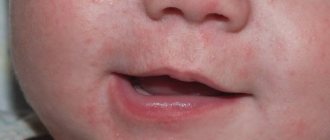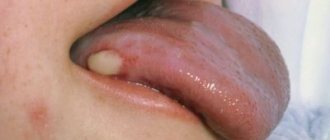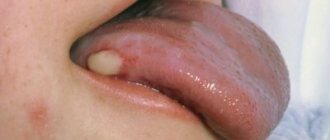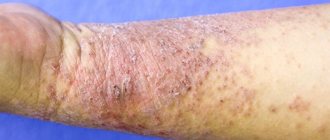A furuncle is an acute purulent inflammation of the hair follicle, sebaceous gland and the surrounding subcutaneous tissue.
It can develop on any part of the body that has hair, with the exception of the palms and soles, where there are no hair follicles. The predominant localization is the face, back of the head, groin areas, buttocks, dorsum of the forearms and hands. The most common pathogen is staphylococcus. The development of the disease is facilitated by constant contamination and friction of the skin on clothing, abrasions, scratching, as well as increased activity of the sweat and sebaceous glands in certain diseases (seborrhea, acne, etc.), decreased immunity of the body, and hypovitaminosis. Most often, boils occur during puberty in adolescents, as well as with endocrine disorders (diabetes mellitus, etc.).
Carbuncle
A carbuncle is several boils connected to each other by numerous passages. The infection usually develops due to the ingestion of Staphylococcus aureus and can lead to significant skin necrosis. During treatment, the patient is prescribed antibiotics, and sometimes surgery is required.
Diagnosis of a boil
The boil appears in the form of a “pimple” with inflammation around it; in the center you can usually see a “rod” (inflamed hair follicle). Inflammation quickly increases and in the absence of proper treatment of the boil, an abscess forms in the underlying tissues, i.e. the boil becomes abscessed. At this stage, surgical treatment of the boil is necessary.
The photo shows an abscess boil of the left thigh.
The photo below shows a femoral boil. Against the background of redness and infiltration, three purulent “heads” are visible. With further spread of the process and lack of treatment, such a boil can turn into a carbuncle.
In some cases, boils appear frequently, in different parts of the body. This condition is called furunculosis. In case of furunculosis, it is necessary to be examined by a surgeon, dermatologist, immunologist, and endocrinologist to find the causes that caused this disease.
The most dangerous are boils on the face, especially those located above the nasolabial fold. The fact is that with this location of the boil there is a risk of developing meningitis.
Causes
The disease usually develops with a combination of external and internal factors and a decrease in the body's defenses.
The reasons for the appearance of a carbuncle include:
- Active reproduction of pathogenic organisms on human skin.
- Violation of the integrity of the epidermis (wounds, scratches, splinters, insect bites, calluses, scratches, bruises, abrasions).
- Excessive sweating (hyperhidrosis).
- Disruption of the sebaceous glands.
- Poor facial and body hygiene.
- Endocrine pathologies (disorders of the thyroid or parathyroid glands, adrenal glands) and metabolic diseases (diabetes mellitus, obesity).
- Immunodeficiencies and hypovitaminosis.
- Frequent infectious diseases (ARVI, influenza, parainfluenza, tonsillitis, pharyngitis, tonsillitis).
- Serious chronic pathologies (arthritis, myocarditis, hepatitis).
- Poor nutrition and inactive lifestyle.
- Stress and psycho-emotional stress.
Carbuncle
- purulent inflammation of several hair follicles, accompanied by necrosis (death) of the skin.
With a carbuncle, the purulent-necrotic process can involve large areas of the skin and subcutaneous tissue; in some cases, the treatment of a carbuncle requires quite extensive interventions - see the example above.
In the photo there is an infiltrate with skin necrosis in the center and severe inflammation around it - a carbuncle of the trunk.
Furuncle. Carbuncle
Furuncle and carbuncle
Furuncle and carbuncle are various variants of a local purulent-inflammatory process on the skin.
In everyday speech they are called boils, abscesses, ulcers, or even more vulgarly - pimples; this is a very common phenomenon, for which, however, there is no accurate epidemiological data (not every suppuration of this kind comes to the attention of the doctor and is taken into account by medical statistics). Furuncle and carbuncle, essentially being superficial skin abscesses, show an undoubted relationship in etiopathogenetic terms, which is why they are discussed in one article. However, these concepts are not identical and not even synonymous.
A furuncle in specialized literature, especially foreign, is often called deep folliculitis, since this is an inflammation of the hair follicle (follicle) involving the sebaceous gland and loose connective tissue (fatty tissue). More often this is a single focus, but sometimes scattered boils appear in large numbers over large areas of the skin - in this case they speak of furunculosis.
A carbuncle is fundamentally different in that the inflammation affects not one follicle, but a cluster, a group of neighboring hair follicles at the same time. In addition, inflammation spreads to various layers of the surrounding skin, including deep ones, and subcutaneous tissue. This process is purulent-necrotic in nature, i.e. accompanied by massive cell death in the area of suppuration and subsequent scarring. In fact, a carbuncle is a special case of furunculosis: several follicles are involved in the purulent-inflammatory process, but not distributed over the skin at a distance from each other, but compactly concentrated at one point.
Boils and carbuncles most often occur during puberty (like teenage acne, acne), but under unfavorable conditions they can develop in childhood, adulthood, and old age, sometimes resulting in a much more serious pathology (see below). In general, despite all the “banality” and prevalence of such inflammations, they are far from harmless, and in clinical practice again and again one has to deal with serious complications, primarily due to a belated request for help or, even worse, attempts to self-medicate by squeezing ( although the folk-wise principle “You can’t crush pimples!” today seems to be known to everyone).
Treatment of a boil
In the initial stages, the boil can be treated conservatively - antibiotics are used internally, semi-alcohol bandages, injecting the boil with anesthetics mixed with an antibiotic while simultaneously removing the purulent-necrotic core.
When abscessing a boil, i.e. when a cavity with pus forms in the underlying tissues, treatment is only surgical: under local anesthesia, a small (0.3 to 1-2 cm) incision is made in the projection of the abscess, the cavity is sanitized with antiseptics and drained with a gauze strip or a rubber glove.
More information about the tactics of treating boils can be found here<.
If you are unable to work during the treatment of a boil, you can receive a sick leave certificate.
One of the common mistakes in the treatment of a boil is the use of Vishnevsky ointment or ichthyol, which leads to the progression of a purulent process with the rapid formation of an abscess, and in the absence of proper treatment - phlegmon.
IMPORTANT! With a boil, the purulent process can spread quite quickly, turning into abscess formation; with inflammation of neighboring follicles, a carbuncle can develop. In this regard, early contact with a surgeon allows treatment to be carried out in the initial stages of the disease, quickly, without large incisions and pain. If treatment is delayed, there is a high probability of complications, fraught with large incisions and lengthy treatment - see clinical example.
Treatment of abscesses, phlegmons, boils, carbuncles using laser therapy
Laser therapy is possible only after surgical treatment and opening of an abscess or other abscess, provided that the pus drains.
Before the laser therapy procedure, the cavity must be rinsed.
The postoperative wound itself (incision area) is treated, as well as the surrounding tissue up to 5 cm to the sides. The impact is scanning, at a height of 0.5-1 cm above the surface of the lesion.
| № | Impact area | Frequency | Exposition |
| 1 | The area of the opened abscess or another abscess | MOVE | 5 minutes by 10 cm 2 surfaces |
The course of treatment is 10-15 procedures, 1 procedure per day.
It is recommended to additionally carry out non-invasive effects on the blood in a region as close as possible to the affected area. For all purulent processes, the main method of conservative treatment is antibiotic therapy. Laser exposure significantly increases the transport of drugs to the lesion. Penicillin antibiotics, tetracyclines, etc. are recommended for 7-10 days in combination with nystatin.
Differences from an abscess
Abscesses occur not only in the subcutaneous tissue, but in muscle and bone tissue, internal organs and the cavities between them, often when a foreign object penetrates into the tissue, puncture wounds, or incorrectly performed injections.
An abscess is an inflammation with the accumulation of pus in a limited area, which is accompanied by cell death and purulent melting (destruction) of tissue. A feature of the abscess is the formation of the so-called pyogenic granuloma from young cells and intensively overgrown capillaries, which surrounds the purulent focus and limits it from healthy areas.
Development
First, a painful and hard nodule appears with noticeable redness. After 4–7 days (acute form) or weeks (sluggish form), the cells die, tissues are destroyed, and a capsule with pus and elements of dead cells forms in the middle of the abscess. At this stage, when palpating the abscess area, fluctuation is observed (a feeling of tissue movement over the abscess).
The shape of the capsule can be round and complex - with separate “pockets”.
Next, a red-pink pyogenic membrane forms along the edges of the lesion. An uncomplicated abscess usually ruptures with thick yellowish pus with a sweet and sour odor pouring out or into the anatomical cavities. The pus contains living leukocytes, but the microbes in it are completely destroyed. Scarring of the cavity goes away in 5–7 days, if the outflow of pus from the capsule is not obstructed.
If the outflow of pus is impaired, then after the main volume has drained, a narrow channel is formed - a fistula, connecting the purulent capsule to the place where there is an outlet for the outflow of pus.
Signs
The main manifestations of an abscess coincide with the typical symptoms of purulent inflammation: headache, fever (up to 41), chills, nausea, general weakness.
Visible edema, hyperemia over the abscess and fluctuation of the tissues above it are not detected if the abscess lies deep in the tissue or inside the organs.
Treatment
- More often, surgical intervention is performed in a hospital, but minor superficial suppurations are treated on an outpatient basis.
- If an abscess forms in the liver or lung, a puncture is often performed to remove pus from the abscess capsule (interventional sonography) and introduce antibacterial solutions through a tube into the cleaned cavity.
- In cases of extremely severe disease, the organ is excised along with the abscess.
- After the capsule with pus is opened, the ulcer is treated in the same way as an opened carbuncle. The pus is completely removed by applying bandages soaked in antibiotics and healing ointments.
- In addition to local treatment, rational antibacterial therapy is used.
General signs and stages
Furuncle and carbuncle go through the same stages in their development. There are 4 of them in total, each with its own manifestations:
- The first stage is called infiltrative. It lasts about three days, depending on the characteristics of the body. A painful, swollen abscess forms.
- The second stage takes about a week. During this time, the skin necrotizes (dies), the person develops a fever, and pain is observed at the site of the lesion. Towards the end of the period of necrosis, the rod breaks through and the pus comes out.
- Stage three is characterized by healing. In the place where the purulent-necrotic infiltrates came out, a crater is formed, which will be covered with young tissue for several more days. If the boil was large, healing may take several weeks.
- In the fourth stage, scarring occurs.
An abscess, a boil or carbuncle, always feels like a shooting pain, turns red, and may even have a blue tint. Due to intoxication, a person feels bad, has a headache, and has no strength. If you press on the site of inflammation, the pain becomes stronger.
The importance of distinction
The main factors contributing to the development of pathologies:
- reducing local tissue resistance to pathogens;
- decreased immunity;
- hypothermia, spread of microbial flora with blood from places of inflammation.
More often, patients encounter such types of suppuration as boils, carbuncles, abscesses, and phlegmon, which occur at different depths and in different types of tissue. Competent diagnosis and differentiation (difference) of purulent pathologies contributes to the rapid prescription of the correct treatment regimen.
Difficulties often arise when diagnosing hidradenitis, which is confused with a maturing carbuncle. Therefore, it is necessary to distinguish a carbuncle from a boil, abscess, cellulitis and hidradenitis.
About carbuncle removal and its features, watch this video:








